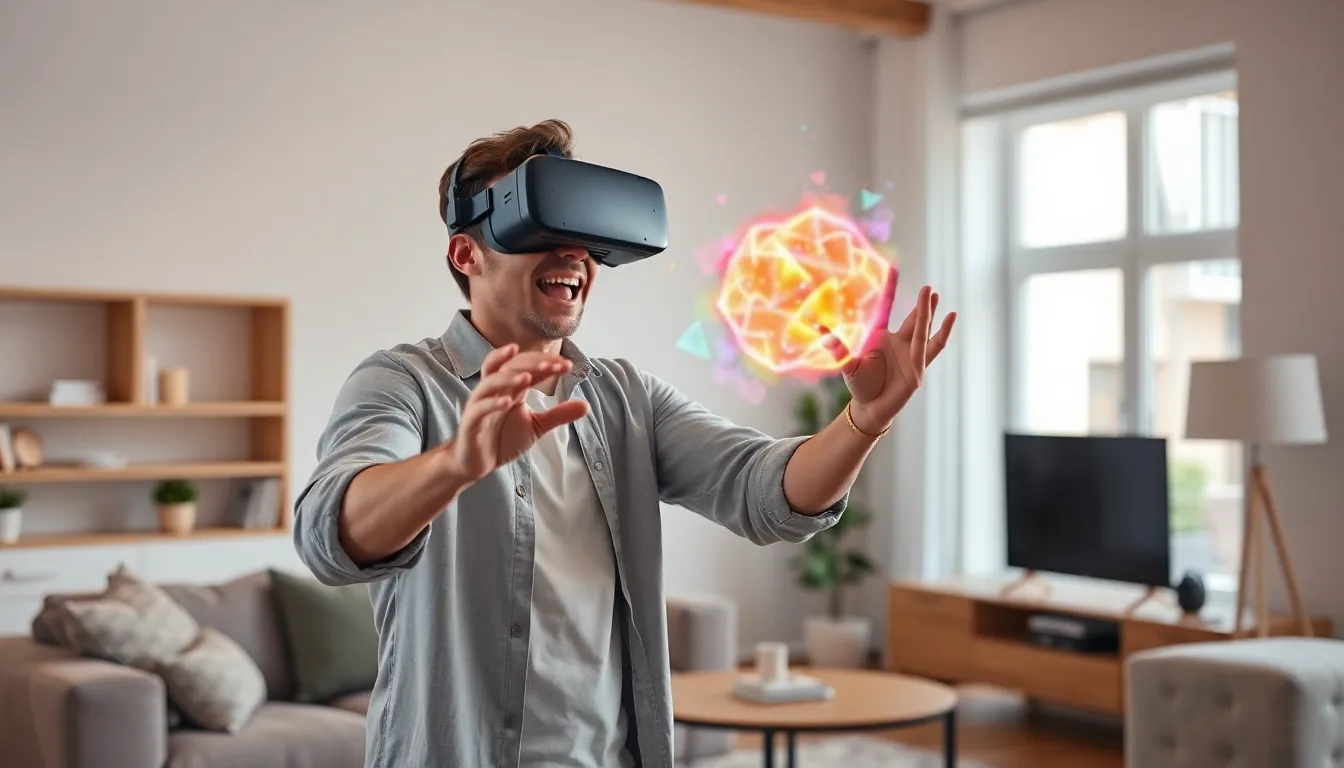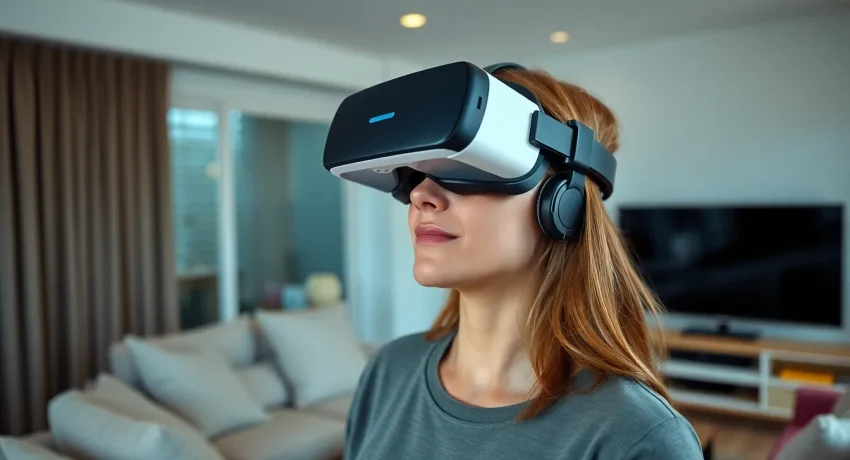Table of Contents
ToggleIn a world where attention spans are shrinking, immersive video experiences are revolutionizing how audiences engage with content. These innovative formats transport viewers into captivating narratives, blending storytelling with cutting-edge technology. By leveraging virtual reality, augmented reality, and interactive elements, immersive videos create a sense of presence that traditional media simply can’t match.
As brands and creators strive to stand out in a crowded digital landscape, the demand for these engaging experiences continues to grow. From virtual tours to interactive documentaries, immersive video is transforming not just entertainment but also education, marketing, and beyond. This article explores the rise of immersive video experiences and their impact on the way we consume content.
What Are Immersive Video Experiences?
Immersive video experiences use technology to create engaging, interactive environments for users. These experiences incorporate elements like virtual reality (VR), augmented reality (AR), and 360-degree video to place viewers inside the narrative, enhancing their emotional connection and engagement with the content.
Key Features of Immersive Video Experiences
- Virtual Reality: VR immerses users in a fully digital environment, requiring the use of headsets. This technology allows users to explore virtual spaces, interact with objects, and engage with other participants in real-time.
- Augmented Reality: AR overlays digital content onto the real world, typically viewed through smartphones or AR glasses. This approach enriches user experiences with contextual information and interactive elements integrated into their surroundings.
- 360-Degree Video: These videos provide an all-encompassing visual experience, enabling users to look in any direction while experiencing a scene. 360-degree videos are popular on platforms like YouTube, where users can navigate through different perspectives.
Applications of Immersive Video Experiences
- Entertainment: Games and films utilize immersive video to offer unique storytelling methods. For instance, VR gaming creates participatory narratives that increase player agency, while AR enhances traditional films with interactive elements.
- Education: Immersive video serves as a powerful educational tool, enriching learning through virtual field trips and interactive simulations. This approach allows students to experience complex topics firsthand, reinforcing understanding and retention.
- Marketing: Brands leverage immersive video to craft memorable campaigns. For example, AR filters on social media engage consumers, while VR experiences allow potential buyers to explore products in innovative ways.
Immersive video experiences represent a shift in how individuals consume content, offering creative opportunities for deeper engagement across various sectors.
Types of Immersive Video Experiences

Immersive video experiences come in various forms, each offering unique engagement opportunities. Understanding these types enhances the appreciation of innovative storytelling methods.
Virtual Reality Video
Virtual reality (VR) video transports users to entirely digital environments, creating fully immersive experiences. Users don VR headsets, allowing them to interact with 3D spaces. Applications span from gaming, where players explore virtual worlds, to training simulations for professionals in fields such as medicine and aviation. Key characteristics include real-time interactivity and the ability to manipulate the environment, heightening the sense of presence.
Augmented Reality Video
Augmented reality (AR) video overlays digital content onto the real world, enhancing the user’s environment. By using smartphones or AR glasses, users witness virtual objects integrated into their physical surroundings. AR video finds applications in marketing, where brands engage consumers through interactive experiences. Real-time information display and object manipulation create a seamless blend of reality and digital enhancements, fostering more profound connections with products.
360-Degree Video
360-degree video offers viewers the ability to look in any direction within a captured scene. This type of video utilizes cameras equipped with multiple lenses, recording panoramic footage. Users can interact with the content through compatible devices such as VR headsets or mobile devices. Applications include virtual tours, travel experiences, and event coverage, providing viewers with the freedom to explore and engage at their own pace. The immersive nature of 360-degree video enhances storytelling by placing audiences directly in the narrative.
Benefits of Immersive Video Experiences
Immersive video experiences offer significant advantages that enhance user interaction and satisfaction. These benefits include heightened engagement, improved retention, and a deeper emotional connection.
Enhanced Engagement
Enhanced engagement occurs through interactive elements that involve users actively. Users participate in the content rather than passively observe it, resulting in longer viewing times. Features such as VR environments or AR overlays allow users to explore narratives at their own pace. Studies show that audiences interact 50% more with immersive content than with traditional video formats, leading to a more profound investment in the story or brand message.
Improved Retention
Improved retention stems from the multisensory nature of immersive video experiences. By engaging sight, sound, and sometimes even touch, these formats create unforgettable content. Research indicates that learners retain information better when presented through immersive techniques, with retention rates upwards of 75% compared to 10% with conventional methods. This aspect proves particularly beneficial in educational settings and corporate training programs.
Heightened Emotional Connection
Heightened emotional connection results from the immersive qualities that allow users to feel present within the narrative. Immersive formats foster empathy and compassion, as individuals can experience scenarios from various perspectives. For example, users can observe a story through the eyes of a character, creating a more impactful understanding of the environment or situation. Emotional engagement with content can increase by as much as 60%, strengthening the bond between the user and the message conveyed.
Challenges in Creating Immersive Video Experiences
Creating immersive video experiences presents several significant challenges that can hinder production and widespread adoption. Key obstacles include technical limitations, content production costs, and accessibility issues.
Technical Limitations
Technical limitations significantly affect the development of immersive video experiences. Hardware requirements for virtual reality (VR) and augmented reality (AR) can be prohibitive, often necessitating powerful computers or specialized devices. Frame rates must remain high, typically a minimum of 60 frames per second, to ensure smooth user experiences and prevent motion sickness. Additionally, network issues can impair streaming quality, with a stable internet connection becoming essential for seamless playback of 360-degree video.
Content Production Costs
Content production costs for immersive video experiences often exceed those for traditional formats. High-quality immersive content demands specialized skills from teams, including 3D artists, animators, and programmers. The complex nature of VR and AR projects leads to longer development times, with budgets commonly reaching upwards of $50,000 for short pieces. Furthermore, ongoing maintenance and updates to immersive content can compound costs, as technology rapidly evolves.
Accessibility Issues
Accessibility issues create challenges for embracing immersive video experiences across diverse audiences. Certain users may lack access to necessary technologies, such as VR headsets or robust internet connections. Additionally, traditional content formats are often more familiar and user-friendly, which can deter individuals from engaging with immersive experiences. Content designers must prioritize inclusivity, ensuring that immersive experiences cater to varying sensory and physical abilities, demanding careful consideration during the design phase.
Immersive video experiences are reshaping the landscape of content engagement. As technology advances and user expectations evolve, the demand for these innovative formats continues to grow. The ability to create deeper emotional connections and enhance user participation sets immersive video apart from traditional media.
While challenges like production costs and accessibility remain, the potential benefits far outweigh the obstacles. Content creators are tasked with finding solutions that ensure inclusivity and accessibility. As immersive video experiences gain traction, they promise to revolutionize how audiences interact with stories across various sectors, paving the way for a more engaging future in media consumption.




